Flight Report - São Paulo to Cascavel now on Boeing 737 MAX
We flew on GOL's newest aircraft, the Boeing 737 MAX 8. The MAX now operates on 54 out of 74 destinations served by the Brazilian airline, both on domestic and international flights. Click on the image and embark with us.
On September 4, 2023, GOL Linhas Aéreas conducted its first flight with the innovative Boeing 737 MAX 8 to Cascavel (CAC), in Paraná. Departing from Guarulhos (GRU), this marked the 54th destination that GOL began operating with the MAX. Currently, the airline serves 74 domestic destinations and offers six weekly flights between Cascavel and Guarulhos.
Cascavel is renowned for its diverse culture, hosting a variety of cultural events, with country music being one of the highlights. Its dynamic economy preserves its agricultural and livestock roots through traditional festivals that celebrate agriculture and the Gaucho culture. Agribusiness plays a crucial role in the region, with a focus on grain production such as soybeans and corn, as well as cattle farming. Cascavel is also known for the presence of large agricultural cooperatives and agro-industries, which significantly contribute to food production and exports.
 |
| Cascavel, Paraná, Brazil, seen from above. |
Cascavel Airport, known as Coronel Adalberto Mendes da Silva Airport, began operations in 1937 as a grass runway for National Air Mail flights. Over the years, it underwent various renovations and expansions to meet the needs of commercial aviation. In 2010, it underwent a major overhaul, including runway expansion, safety improvements, facility modernization, and the creation of an executive aviation area. In 2020, a new passenger terminal was inaugurated, featuring two boarding bridges (fingers), significantly increasing capacity and providing modern facilities.
 |
| Cascavel Airport (CAC / SBCA), Paraná, Brazil. |
There are plans for further improvements, including internationalization and privatization, runway expansion, and the construction of a cargo terminal, with the support of INFRAERO.
Upon arriving at Guarulhos, my boarding took place at 7:43 AM towards Gate 213, located in Terminal 2.
The flight is G3 1182. The aircraft with registration PR-XMI (Papa Romeo – X-ray Mike India) is the MAX aircraft responsible for this inaugural flight to the city of Cascavel, delivered to GOL on February 2, 2022, but now four years since its construction by the American Boeing Company.
 |
| Gate 213 at Guarulhos. |
Once at the gate, in box 404 and Gate 213, boarding onto the aircraft is conducted. The flight is quite full, nearly packed, and my seat is 27F. Boarding is completed at 09:13 AM.
 |
| The Boeing 737 MAX 8, registration PR-XMI, at Gate 404 in Guarulhos. |
The Boeing MAX starts engine 2 while Guarulhos Ground authorizes our taxiing via taxiways H, A, G (Hotel, Alpha, Golf) to the runway 10L threshold. The departure from São Paulo will follow the RNAV ZORZA 1A departure procedure.
I notice a small Cessna Citation executive aircraft waiting on the apron for our takeoff. At 09:19 AM, the MAX begins its taxi to CAC. At a speed of 177 knots (216 km/h = 134 mph), PR-XMI leaves the ground and starts climbing on heading 095° towards the AMVUL waypoint, directly above the Rodoanel and the Arujá Industrial Center.
Upon crossing the AMVUL waypoint at 4,200 feet (1,280 meters) altitude, PR-XMI initiates a right turn towards the GR027 waypoint, heading 131°, near the GM factory in Mogi das Cruzes. At a cruising altitude of 6,600 feet (2,212 meters), another right turn is executed towards the QDM 267° from the Congonhas VOR (CGH).
 |
| Neo Quimica Arena Stadium and Itaquera, in the eastern zone of São Paulo, seen from above at 11,000 feet (3,353 meters). |
At this point, we begin to fly over the Eastern Zone of São Paulo, where the Guarulhos Airport comes into view. Upon crossing 11,000 feet (3,353 meters) altitude, I have a clear view of the Neo Química Arena Stadium, along with the Itaquera Metro Station. In less than a minute, already at 14,000 feet (4,267 meters), we are flying over the central region of the city of São Paulo, where I can see the Brás and Luz Stations, as well as the entire length of Marginal Tietê and the Campo de Marte Airport located in the North Zone. Immediately, in less than a minute, we are at 15,000 feet (4,572 meters), flying over the South Zone of São Paulo, with a panoramic view of Avenida Paulista, the Pacaembu Stadium, and, in the distance, the Allianz Parque stadium.
We cross the Congonhas VOR (CGH) at 16,000 feet (4,879 meters) and continue to climb to 18,000 feet (5,486 meters) towards the ZORZA departure waypoint, located in the Capão Redondo and Guarapiranga Ecological Park region. At this moment, the transition altitude is reached, and the standard altimeter is set to 1013.2 HPA (or 29.92 InHg). The Boeing MAX starts a gentle right turn heading 326°, climbing to 24,000 feet (7,315 meters) towards the GR214 waypoint, in the São Roque region. We continue on our course, and our climb takes us to 27,000 feet (8,230 meters) towards the GR216 waypoint, near the Road Shopping on the Castelo Branco Highway. Seat 27F provides a view of São Paulo Catarina Executive Airport.
 |
| Boeing MAX in flight. |
The MAX provides good comfort to passengers, and it's impossible to perceive the ascent angle. With no turbulence in the region, we continue climbing to the cruising altitude of 31,000 feet (9,449 meters) towards the LESSA waypoint. At this moment, I have a panoramic view of the city of Campinas, as well as Itu and Jundiaí. As we fly over the city of Porto Feliz, our flight crosses the LESSA waypoint and initiates a left turn towards our transition waypoint ASETA, near the areas of Areia Branca and Porangaba.
We complete our climb to the flight level 360 (36,000 feet or 10,973 meters), and the Boeing MAX begins the cruise phase upon crossing the UKLEN waypoint. We enter the UZ152 airway, which will take us to Cascavel in a "straight path" until reaching the ARNIL waypoint. Still in UKLEN, with a panoramic view of the Paranapanema River, we leave the state of São Paulo and start flying over the state of Paraná.
 |
| GOL's in-flight service for domestic flights. |
The flight is pleasant, and all passengers enjoy the moment to experience the new MAX, while the "Eagle Team" – as the crew is known at GOL – initiates the in-flight service on flight 1182 with options of sweet or savory snacks, along with beverages (coffee, soda, water, or juice). At GOL, the in-flight service is provided free of charge to passengers without additional fees, and the snacks vary depending on the route and duration of the flight, unlike the airline's international flights.
 |
| GOL's in-flight service for domestic flights. |
With 92 nautical miles (170 kilometers) remaining to Cascavel Airport, PR-XMI crosses the ARNIL waypoint and begins the descent procedure for our destination.
The Curitiba Center (ACC) clears our descent near the region of Manoel Ribas. The MAX is instructed to fly on heading 278°, and the Boeing initiates a right turn towards the city of Ubiratã. Flying over Ubiratã at 22,000 feet (6,706 meters), the flight is transferred to the Cascavel Control. The aircraft begins a left turn, flying on heading 242° until crossing over the city of Cafelândia at an altitude of 14,000 feet (4,267 meters). Our crew prepares for arrival with the RNP procedure for runway 33.
With flaps and spoilers deployed, the MAX initiates the descent to 6,000 feet (1,828 meters) and begins a left turn towards heading 167°. Some cumulus cloud formations, as expected by the crew, lead us into light turbulence. The Boeing MAX initiates the final approach procedure via the wind leg until crossing the attitude transition waypoint CA011, located in the southeast region of Cascavel and near the toll booth of Highway BR277.
PR-XMI initiates the base leg, descending to 5,700 feet (1,737 meters) altitude on heading 226° until reaching waypoint CA009. Soon, the Boeing MAX is fully configured for landing, with flaps fully extended and approach speed set to 163 knots (301 km/h = 187 mph). We cross waypoint CA009, and the crew lowers the landing gear, initiating the final right turn. The MAX is aligned 8.2 nautical miles (16 kilometers) from the threshold of Cascavel runway 33.
At 10:37 AM, the Boeing MAX touches down in Cascavel for the first time at a speed of 134 knots (248 km/h = 154 mph). During deceleration on the runway, the crew announces our arrival in the city, as well as safety procedures, requesting passengers to remain seated until the aircraft comes to a complete stop, and disembarkation will be by seat order.
Cascavel Airport doesn't have many taxiways like busy major airports. As a result, after deceleration, the Boeing is required to taxi to the end of the opposite threshold and perform a "backtrack" (a 180° turn and taxi back on the runway) to access the passenger terminal. The Boeing MAX clears the Cascavel runway taxiway A (Alpha) and parks at position box 2 at 10:42 AM.
 |
| The Boeing 737 MAX, registration PR-XMI, in Cascavel for the first time. |
The arrival of the aircraft in Cascavel was followed by a brief ceremony at the municipal airport, during which Mayor Leonaldo Paranhos welcomed local authorities to celebrate GOL's new operation with its more fuel-efficient aircraft. It was also announced at the event that during the high season, between December and February, GOL flights between Cascavel and São Paulo will be operated from Congonhas Airport (CGH), located in the southern region of São Paulo.
 |
| Leonaldo Paranhos, Mayor of Cascavel, getting acquainted with the new Boeing MAX. |
"Today marks a historic day for our Cascavel Airport, with the arrival of this modern GOL aircraft. The investments we've made at the airport have resulted in increased demand, and now we have this beautiful aircraft with greater passenger capacity. Another reason for celebration is the announcement made by the airline regarding the initially temporary flights that will directly connect us to Congonhas Airport. In addition to being more convenient for passengers traveling to São Paulo's capital, this will boost business travel as we'll be directly linked to Brazil's financial hub," emphasized Mayor Leonaldo Paranhos.
 |
| Local authorities from the municipality of Cascavel at the arrival ceremony for the new MAX. |
GOL currently operates 38 Boeing 737 MAX 8 aircraft in Brazil, all in active service, with plans to reach 75 – half of its fleet – by the end of 2025. Thus, the company reaffirms its commitment to continually renewing its fleet, utilizing more modern and efficient airplanes, reducing costs, and generating fewer pollutants.
 |
| The Boeing 737 MAX, registration PR-XMI, in Cascavel for the first time. |
The 737 MAX plays a crucial role in the company's goal of achieving carbon neutrality by 2050, as this model is 15% more fuel-efficient, generates 16% fewer carbon emissions, and is 40% quieter compared to the 737-800 NG. Since 2019, GOL has already accumulated over 240,000 flight hours with MAX aircraft, resulting in a savings of 115.2 million liters of aviation fuel and a reduction of 364,032 metric tons of greenhouse gas emissions.
 |
| The Boeing 737 MAX, registration PR-XMI, in Cascavel for the first time. |
"The entire commercial aviation sector is highly focused on ESG (Environmental, Social, and Governance), and GOL's goal is to establish an operation that is 100% committed to the environment, including being the only Brazilian airline to achieve the Stage 2 IEenvA certificate (IATA Environmental Assessment). Expanding our MAX 8 bases is a fundamental part of achieving our sustainability goals," said André Cruz, COO (Chief Operating Officer) of GOL.
Return: CAC – GRU
Punctually and with the same crew as on the outbound flight, the return flight to São Paulo is G3 1181. Through taxiway A (Alpha), the Boeing 737 MAX is cleared to perform the backtrack and take off from runway 33. Our Cascavel Departure Procedure (SID) will be OMNI RWY 15/33.
 |
| The Boeing MAX in flight on the GRU-CAC-GRU route. |
At 11:40 AM, the MAX initiates the first takeoff from Cascavel with a climb speed of 150 knots (278 km/h = 172 mph). Upon reaching 4,300 feet (1,310 meters) of altitude, crossing over BR163, the MAX starts a right turn, and on my right side, I begin to have a view of the city of Cascavel, as well as the city's municipal stadium. The MAX continues to fly, encircling the western edge of the urban area. Still executing a standard right turn, we fly over the northern sector of the city of Cascavel. GOL's PR-XMI reaches a cruising altitude of 8,000 feet (2,438 meters), where I have a view of the Metropolitan Cathedral of Our Lady of Aparecida, located in downtown Cascavel.
The MAX departs Cascavel at 11,000 feet (3,474 meters) on a heading of 140°. With a slight left turn, following a heading of 122°, the MAX flies towards the PALOX fix, climbing to 24,000 feet (7,315 meters), before entering Aerovia UZ28 via the TERER fix. The PR-XMI cruises at flight level 370 (37,000 feet or 11,278 meters).
For in-flight entertainment, the PR-XMI is equipped with GOL Online. Passengers can connect through their smartphones via the web, accessing a menu of movies and series. Similar to our outbound flight, the cabin crew initiates the onboard service with options of sweet or savory snacks and beverages (water, soda, juice, or coffee).
 |
| The Boeing MAX in flight on the GRU-CAC-GRU route. |
The return trip gives the sensation of a shorter duration. We leave the state of Paraná and start flying over the state of São Paulo. We are informed by the crew of the descent commencement as we cross over the city of Capão Bonito. Our MAX is vectored by the Curitiba Center (ACC) to fly on a heading of 066° toward the Água Branca region in a descending flight to 29,000 feet (8,840 meters). Then, we initiate a left turn heading 025° toward the Sarapuí region while maintaining our altitude at 26,000 feet (7,925 meters).
The Curitiba Center hands over the flight to São Paulo Approach Control (APP) and clears us to descend to 24,000 feet (7,315 meters). Currently, Guarulhos is operating landings on runway 28L and takeoffs on 28R. The crew sets up the arrival procedure via the RNAV EVRAL 1B STAR with a transition through the BUXUK fix.
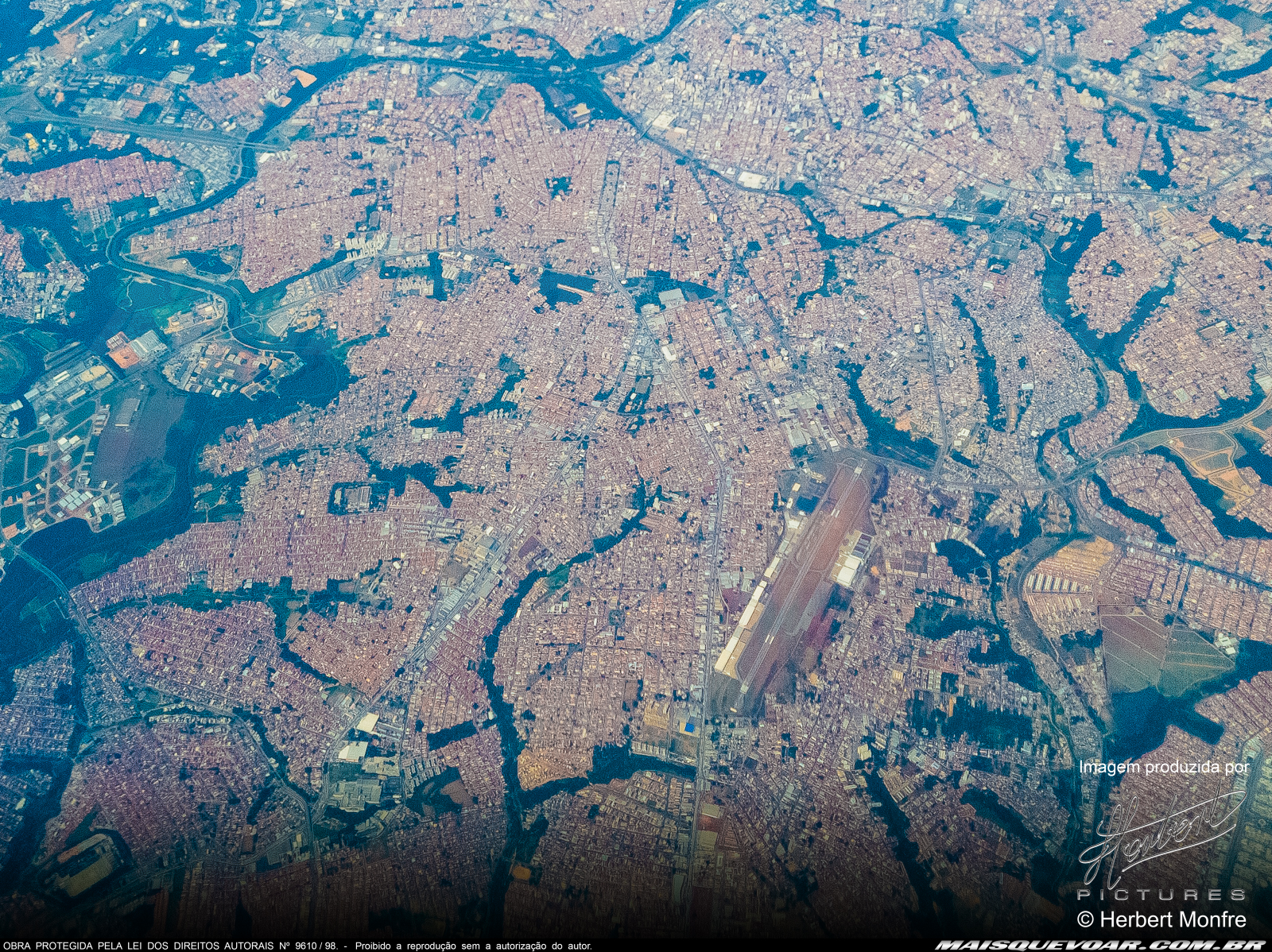 |
| .Sorocaba Airport and the entire city seen from above at 23,000 feet (7,010 meters). |
As we cross over the city of Araçoiaba da Serra, I spot Sorocaba Airport in its entirety on my right side, at 23,000 feet (7,010 meters), and the entire city of Sorocaba. At 19,000 feet (5,791 meters), we fly over the Itupeva region, with a view of Jundiaí Airport, the urban area of the city, and neighboring towns.
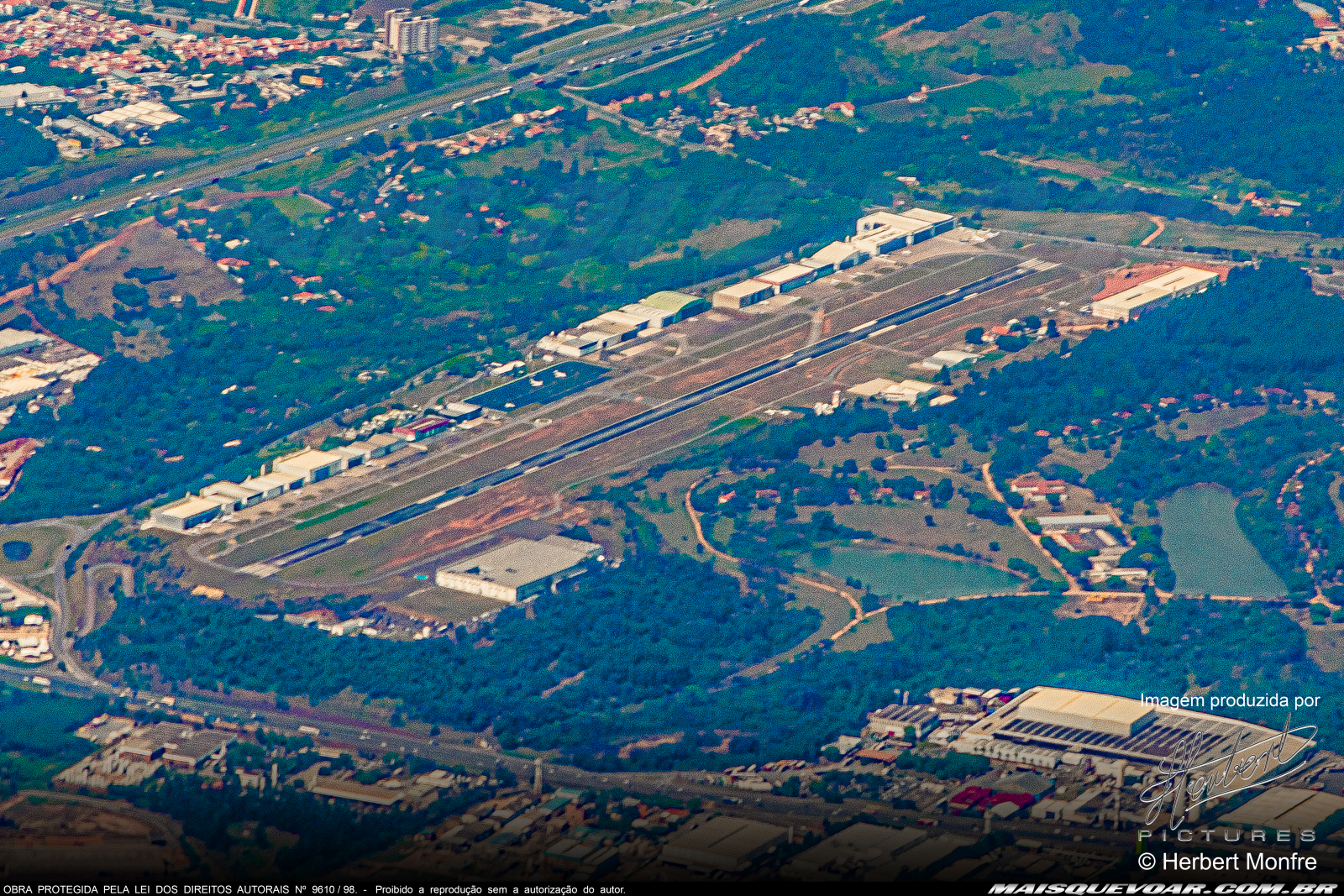 |
| Jundiaí Airport seen from above at 19,000 feet (5,791 meters). |
We begin to experience some light turbulence as we cross through an area of pressure and the presence of some cumulonimbus clouds forming, near the Morungaba region. The MAX initiates a right turn heading 085°, descending to 14,000 feet (4,267 meters).
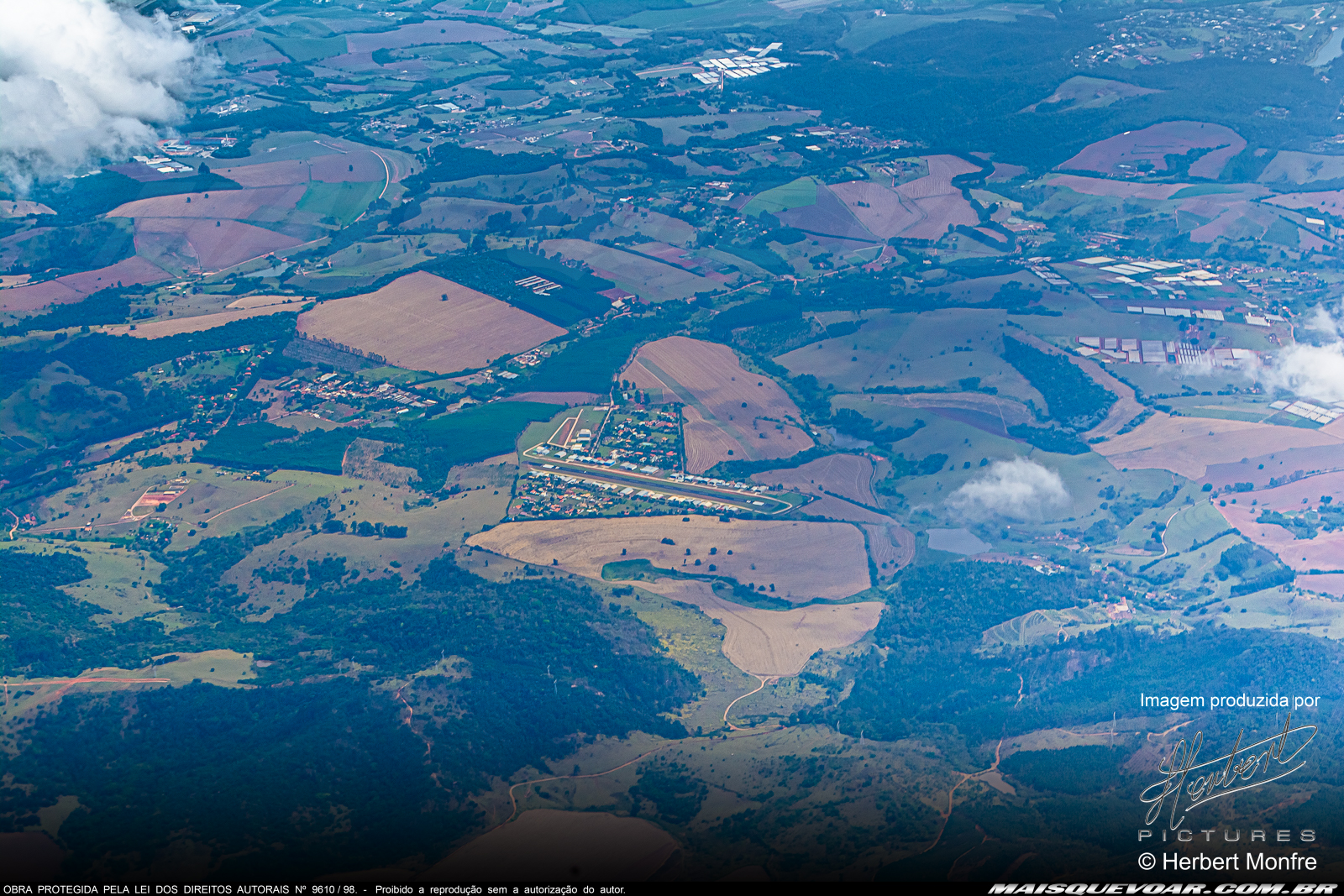 |
| Vale Eldorado Aeronautical Condominium seen from above at 11,000 feet (3,353 meters). |
The São Paulo Approach Control vectors the MAX to fly near the Braganca VOR (BGC) on a heading of 180° at an altitude of 11,000 feet (3,353 meters), where I see the Vale Eldorado Aeronautical Condominium.
 |
| Atibaia Airport seen from above at 10,000 feet (3,048 meters). |
We continue on this heading and soon fly over the city of Atibaia at 10,000 feet (3,048 meters), with a view of the Atibaia aeroclub on the left, with its unpaved runway parallel to the Fernão Dias Highway. Passengers seated on the left side have the privilege of seeing Pedra Grande, a tourist attraction in the Atibaia region. The Boeing MAX crosses the SANPA fix and continues to fly on a heading of 143°, executing a left turn.
 |
| Panoramic view of Guarulhos Airport at 6,000 feet (1,828 meters) and the city of São Paulo. |
Descending to 6,000 feet (1,828 meters), the Boeing enters the downwind leg for Guarulhos on a heading of 113° at a speed of 230 knots (482 km/h = 299 mph). Greater São Paulo begins to come into view, as well as a Boeing 737 from another airline performing the landing procedure on runway 28 at Guarulhos.
 |
| Industrial Village of the city of Santa Isabel seen from above at 5,800 feet (1,372 meters). |
At 5,800 feet, we enter the base leg for Guarulhos and begin the landing phase using the (IAC) RNP X RWY 28L approach procedure. Fully configured for landing, with flaps fully extended and approach speed set to 148 knots (274 km/h = 170 mph), the Boeing MAX begins the final approach through the ETIKO fix at an altitude of 4,500 feet (1,372 meters). The landing gear is lowered and locked, and the crew contacts Guarulhos Tower, informing them that we are on final approach 8 miles from the threshold of runway 28L. Guarulhos Tower coordinates the instructions, and the landing is authorized. The Boeing MAX touches down on runway 28L at Guarulhos at 148 knots (274 km/h = 170 mph) at 12:57 PM. During deceleration on the runway, PR-XMI clears the runway taxiway G (Golf) and contacts Guarulhos Ground Control. Immediately, ground control authorizes taxi via G, A, and H (Golf, Alpha, and Hotel). At 1:02 PM, the Boeing 737 MAX completes the flight by parking at box 304.
 |
| The cabin crew of our fligt (GRU-CAC-GRU). |
 |
| The crew of our (GRU-CAC-GRU). |
Trip Details
The information in this section serves as a reference for readers and aims to highlight the main characteristics of each airline, both in terms of operations and passenger relations. All data is specific to this particular flight.
- Booking – When making reservations, I found it somewhat inconvenient when trying to change the flight date. For example, if you want to change just the date of your flight, you are required to redo the entire search, filling in the departure and return locations, as well as seat selections, before the system presents flight options. I also didn't like the visual clutter of partner advertisements offering options for renting a car, baggage, and hotels for the selected destination. For less tech-savvy travelers, this can lead to accidental clicks without even realizing that they've booked a service.
- Check-in – The airline allows check-in starting 48 hours before departure, with a maximum limit of up to 1 hour before departure. I have taken other flights with the airline, and through their app, you can perform early check-in, which can be quite helpful in case of unexpected delays and to avoid missing the flight during the "last call" phase. However, with the recent updates, I found some "bugs" in the app's check-in process, which forced me to use a laptop for web check-in.
- Aircraft – I may be biased as I love airplanes, but the Boeing MAX used for this flight was a new aircraft with new and comfortable seats. The cabin had a clean and airy design, providing a sense of lightness to passengers during the flight. The aircraft was clean, especially the windows.
- Cabin Crew – Of all the flights I've taken in my life, this crew was the most courteous and generous.
- In-Flight Service – The in-flight service was typical of a low-cost, low-fare airline. After all, GOL was the airline in Brazil that introduced the concept of low-cost, low-fare travel, allowing people who had never flown before to experience air travel affordably. Therefore, the onboard service is also simple, without much glamour or luxury compared to other renowned high-fare airlines. Given the short flight duration, I found the onboard service to be adequate.
- Entertainment – I don't have the patience to watch movies or series during flights; I love to admire landscapes, and that's my form of entertainment. However, I missed having in-flight internet on this particular route. Some GOL aircraft are equipped with in-flight Wi-Fi. For those who enjoy movies, the airline provides a menu accessible through the web, where passengers can connect using their own smartphones, tablets, or laptops for in-flight entertainment.
- Comfort – At first glance, the MAX seats may seem less comfortable, but this is a misconception. The seats are comfortable, and I felt a bit more legroom compared to the 737NG and other competing aircraft I've flown on.
- Miles Program – The airline rewards its passengers with the exclusive Smiles miles program, offering promotions through the Smiles credit card. Additionally, Smiles offers GOL passengers the option to redeem miles with more than 60 partner airlines, as well as partnerships with Uber, car rental companies, and hotels. Customers can also accumulate miles when refueling their cars at gas stations.

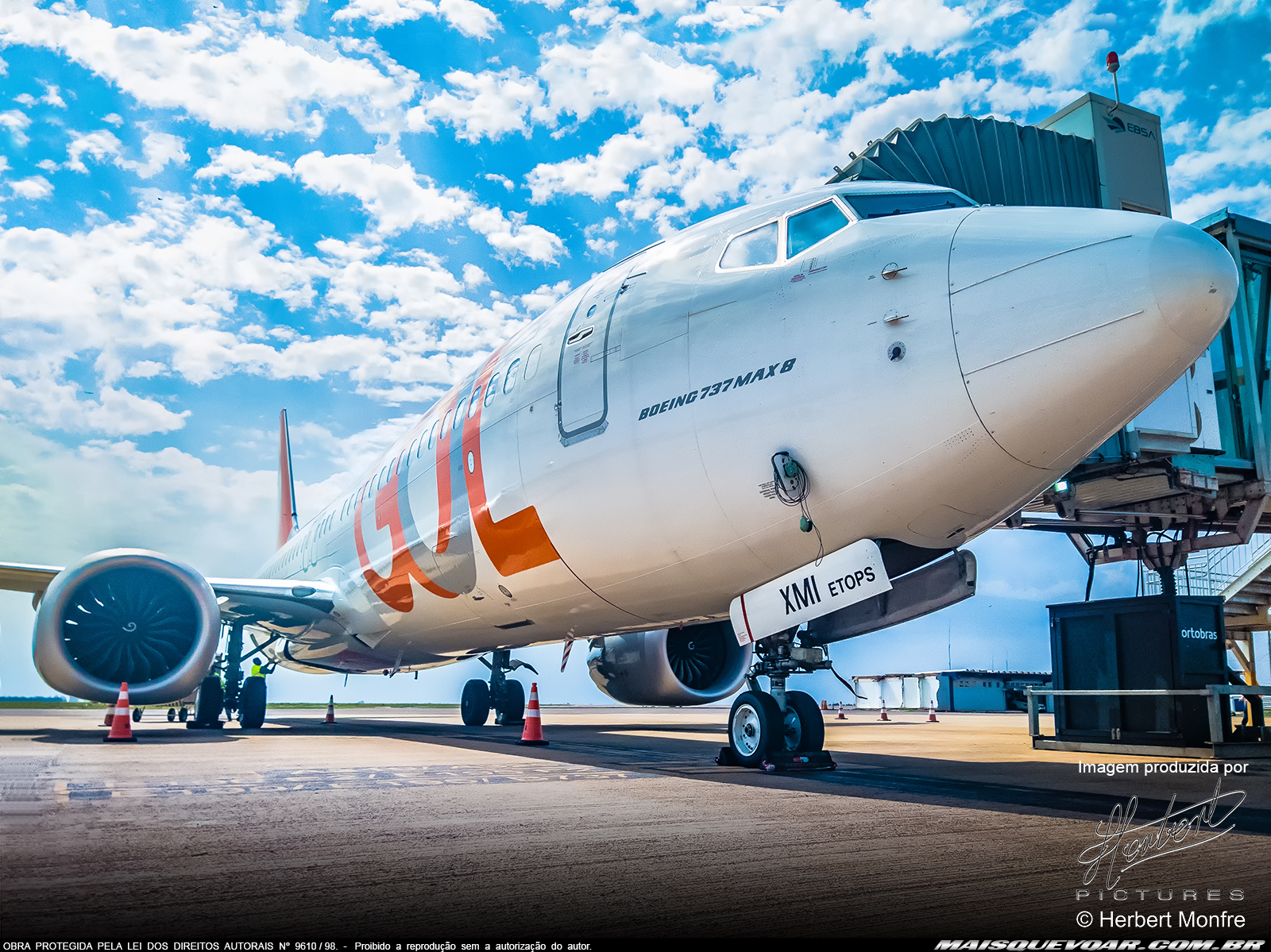

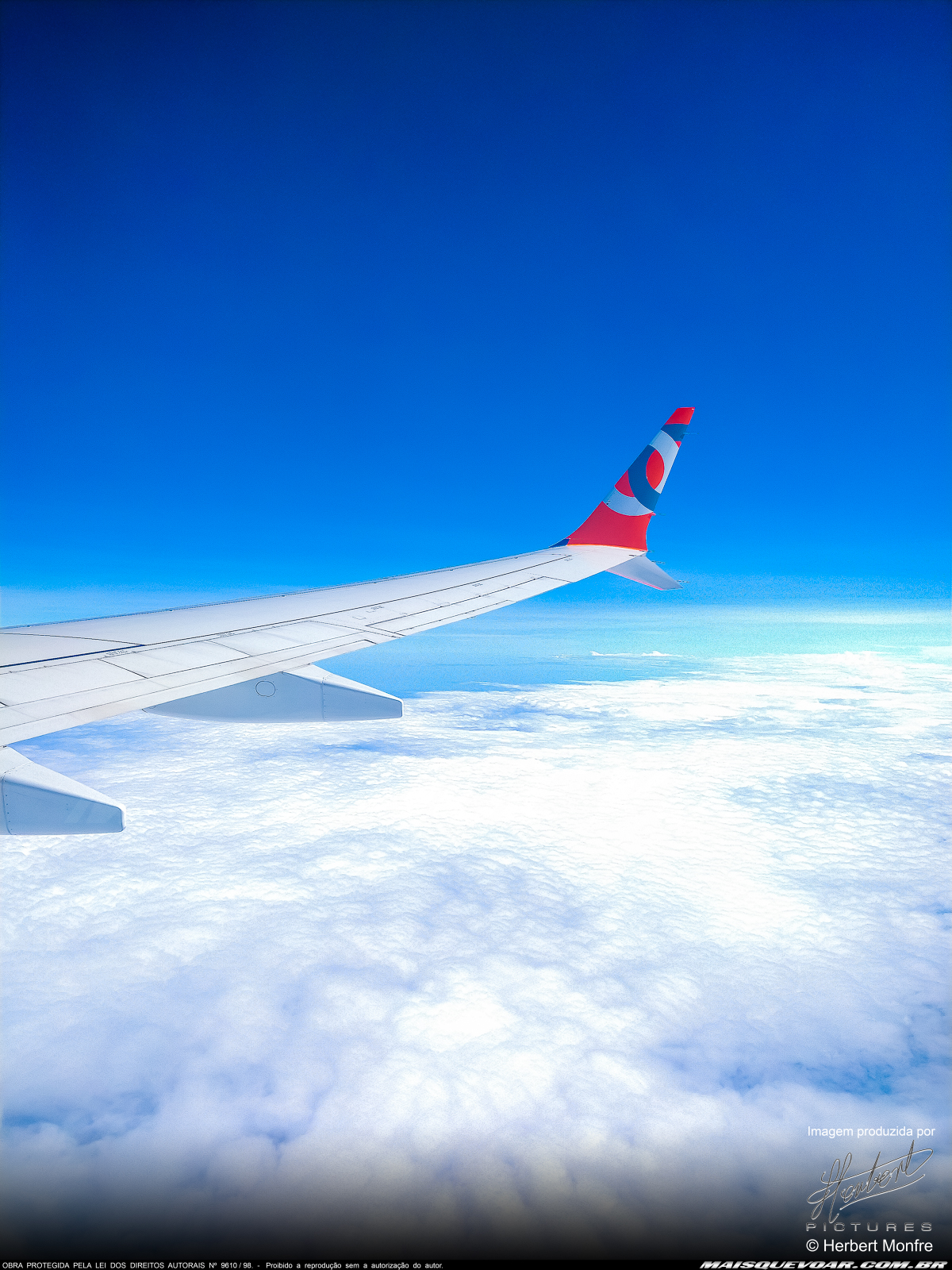

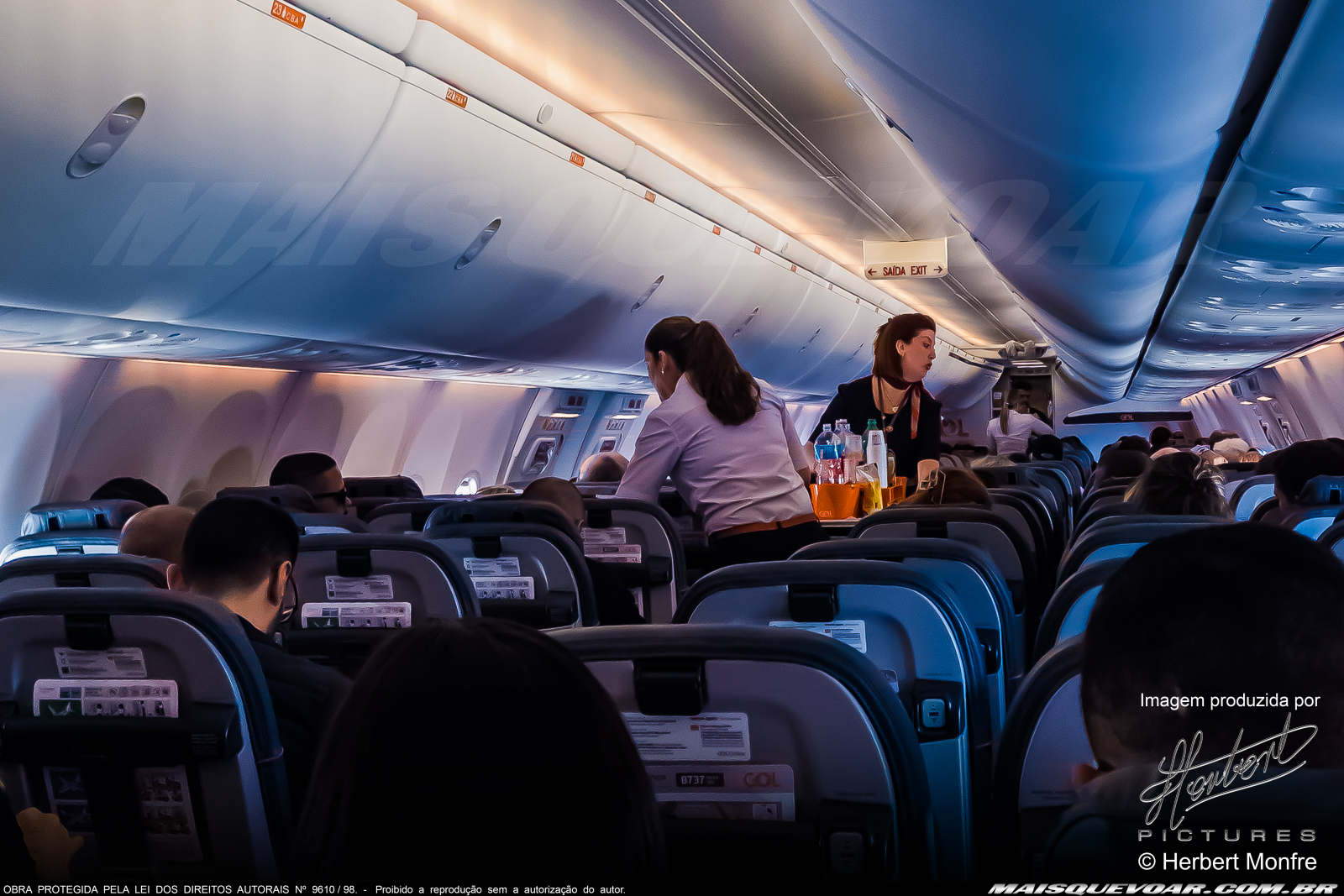

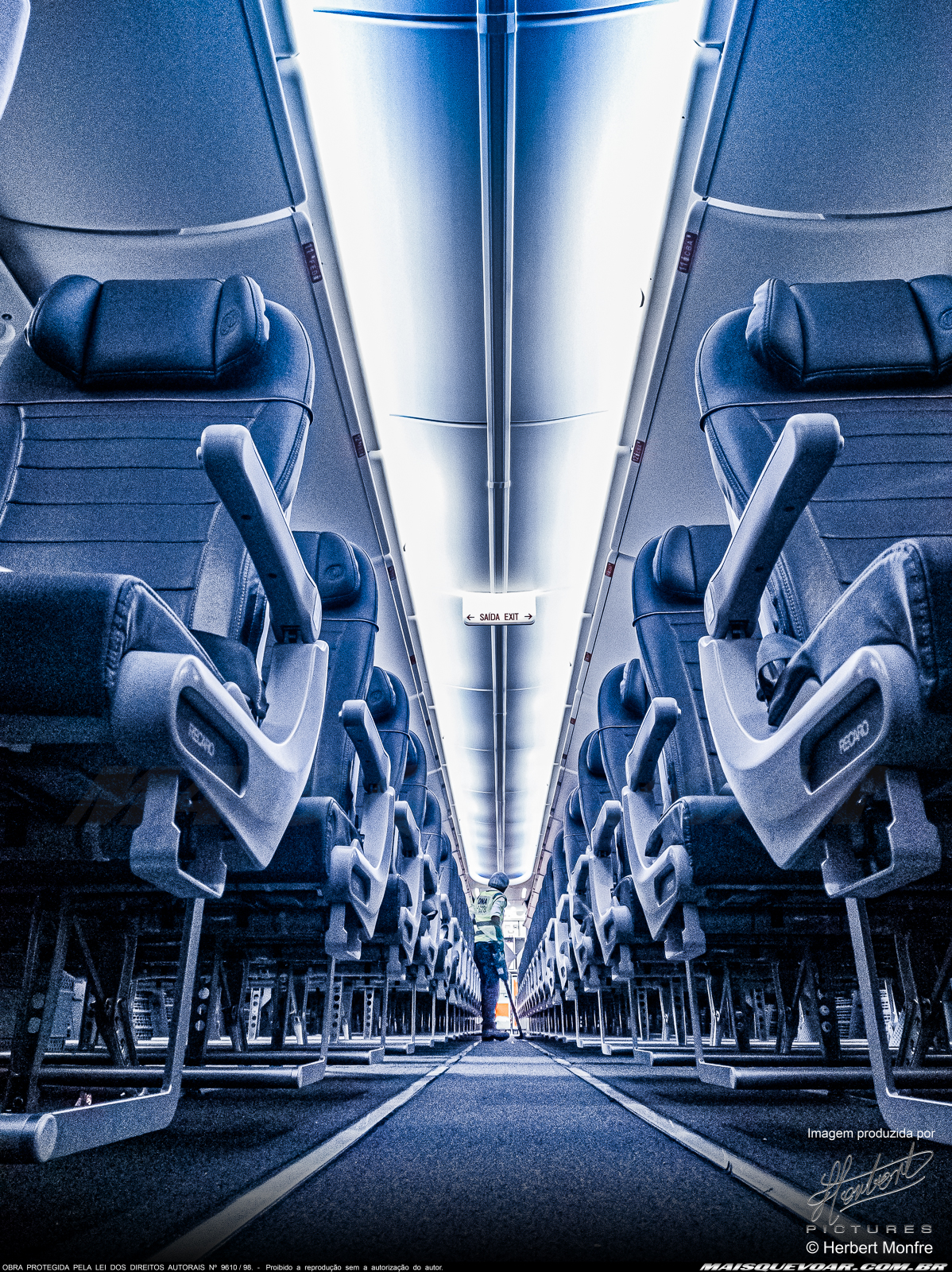
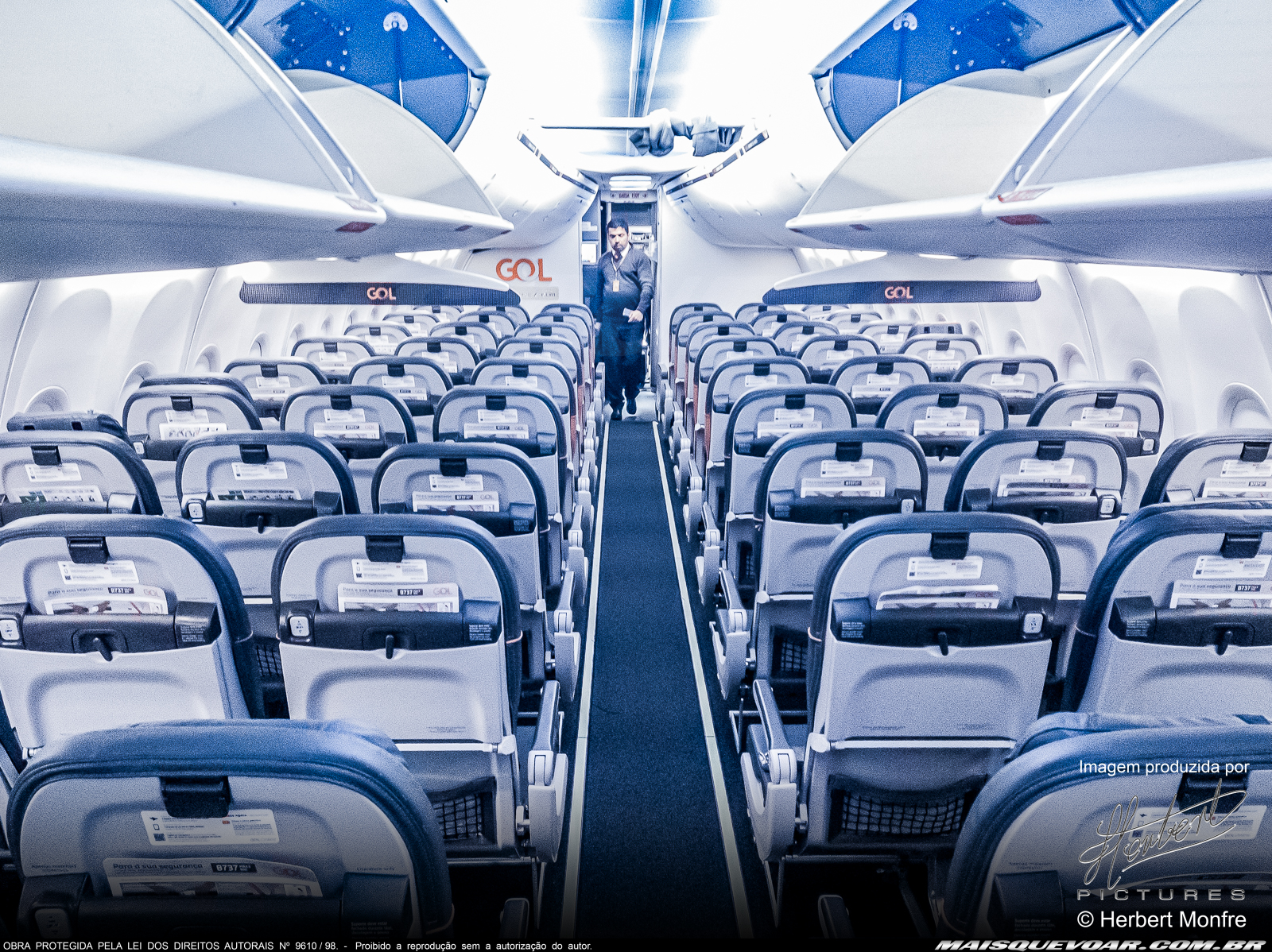






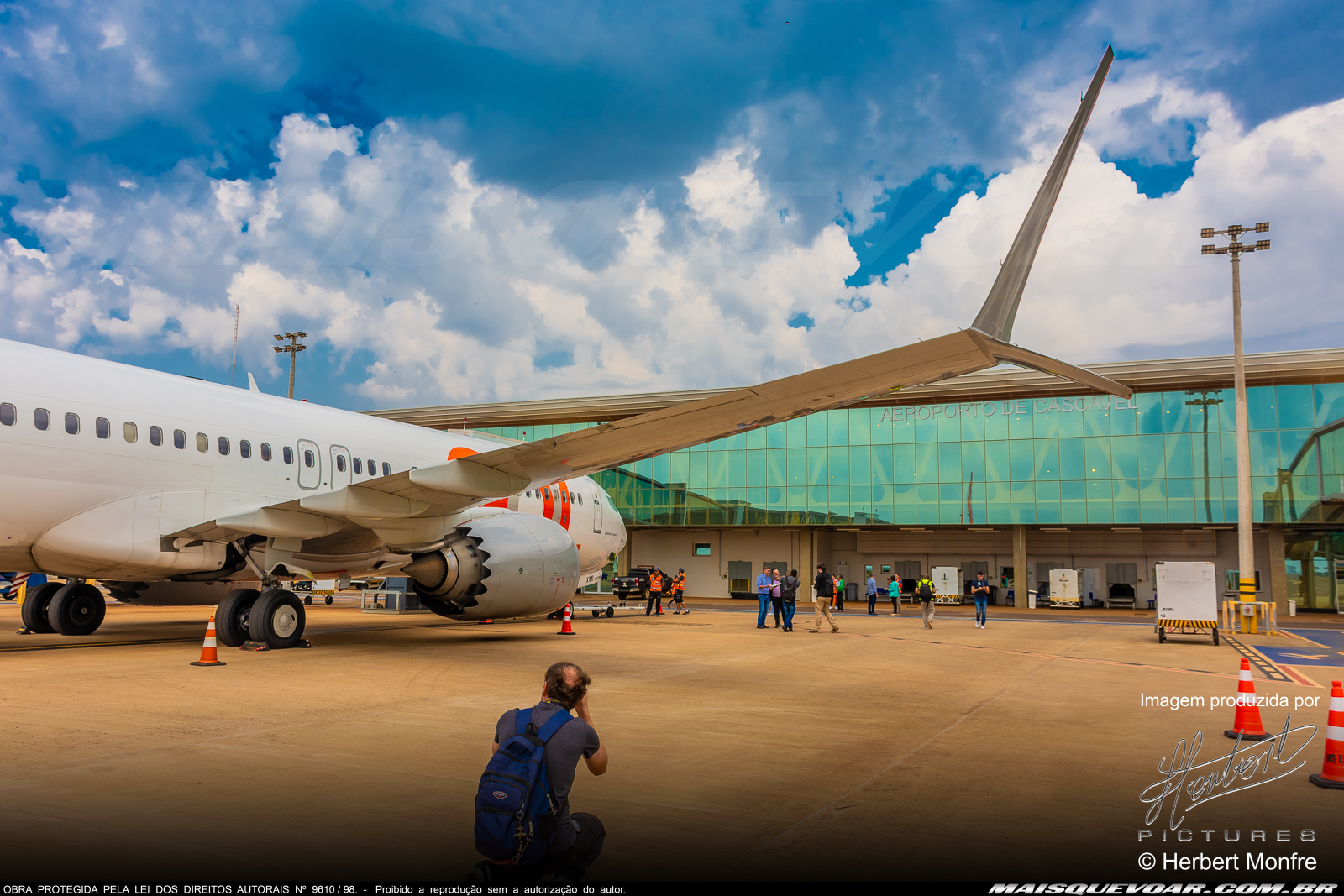

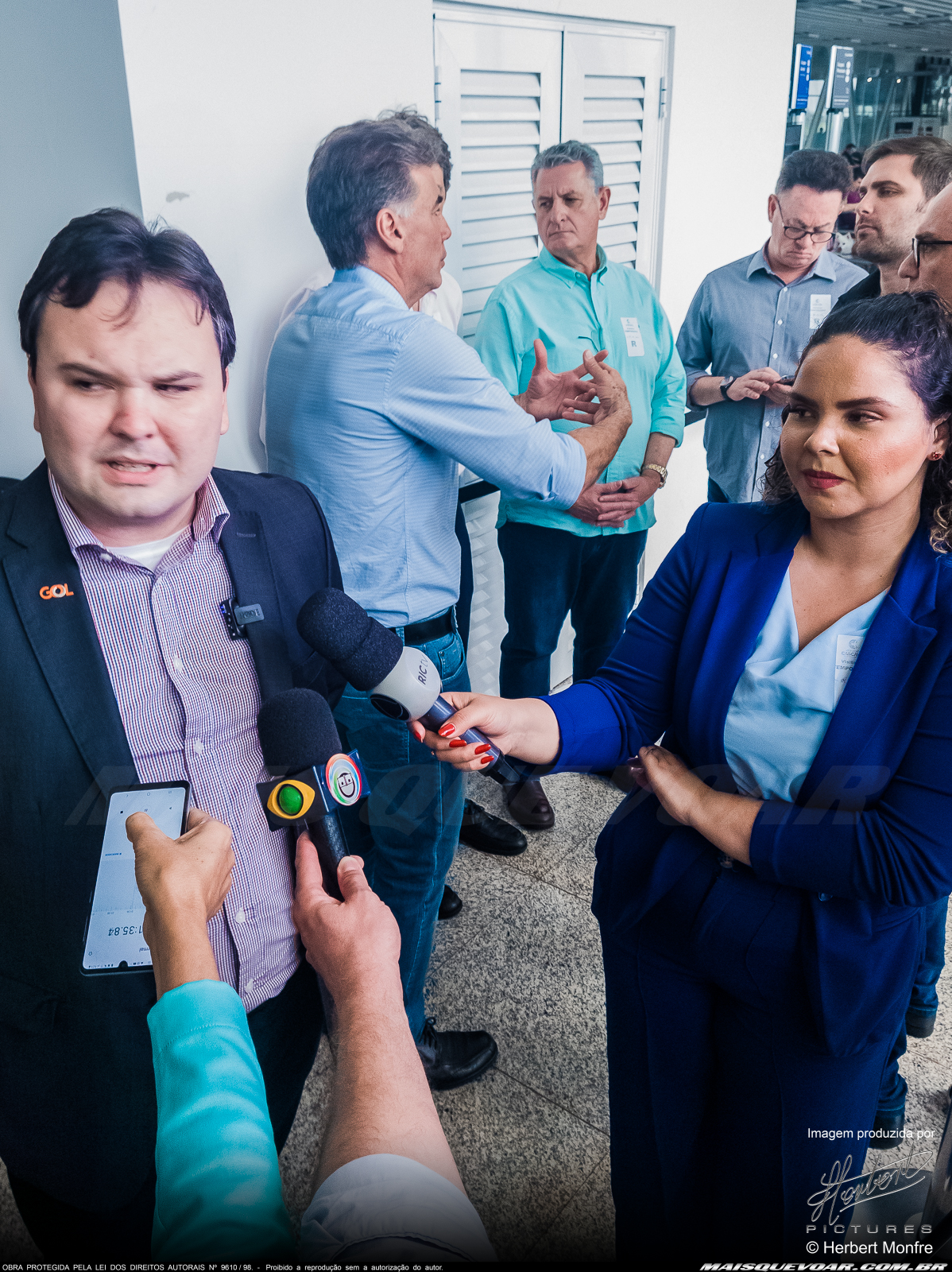






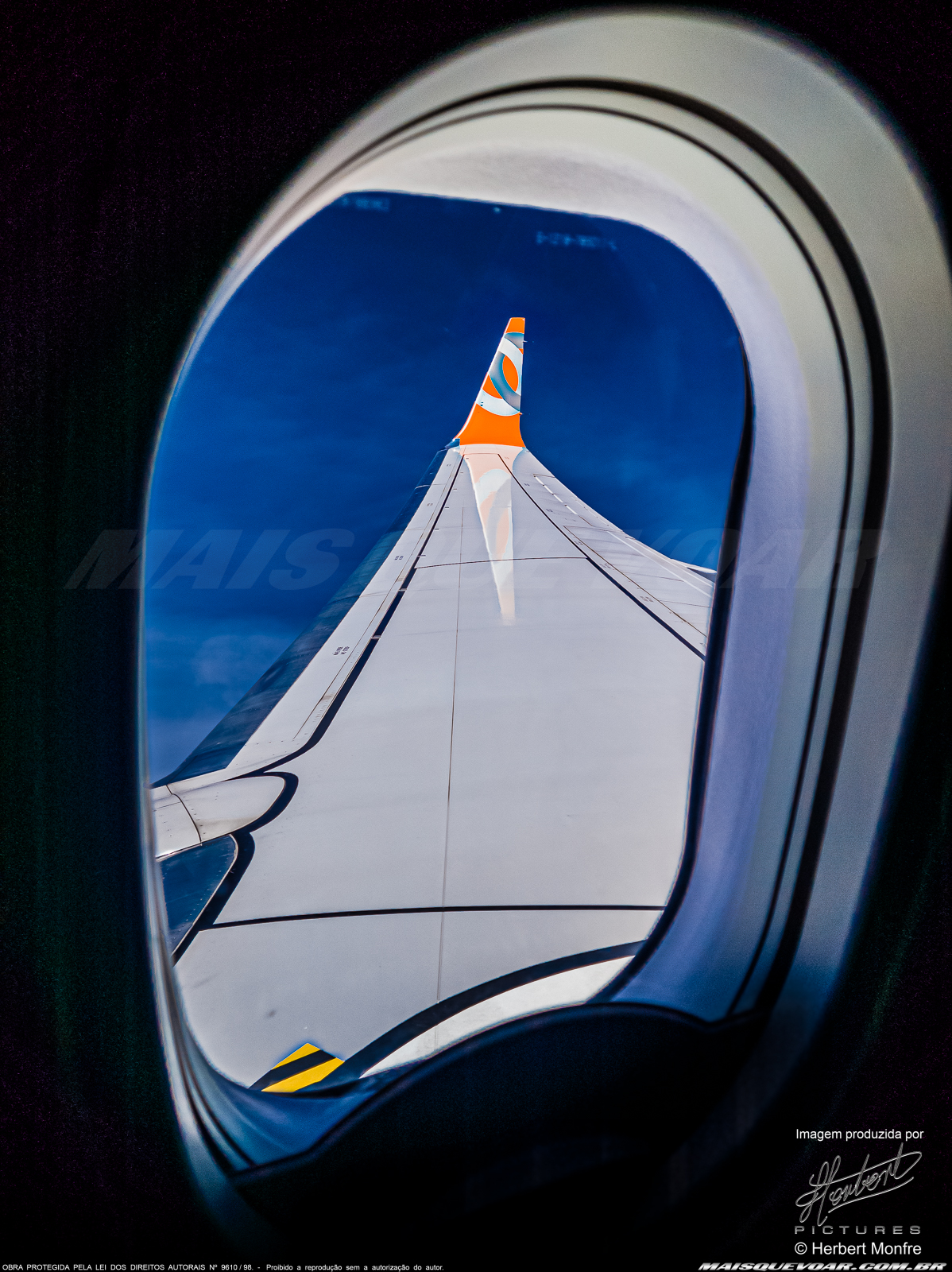




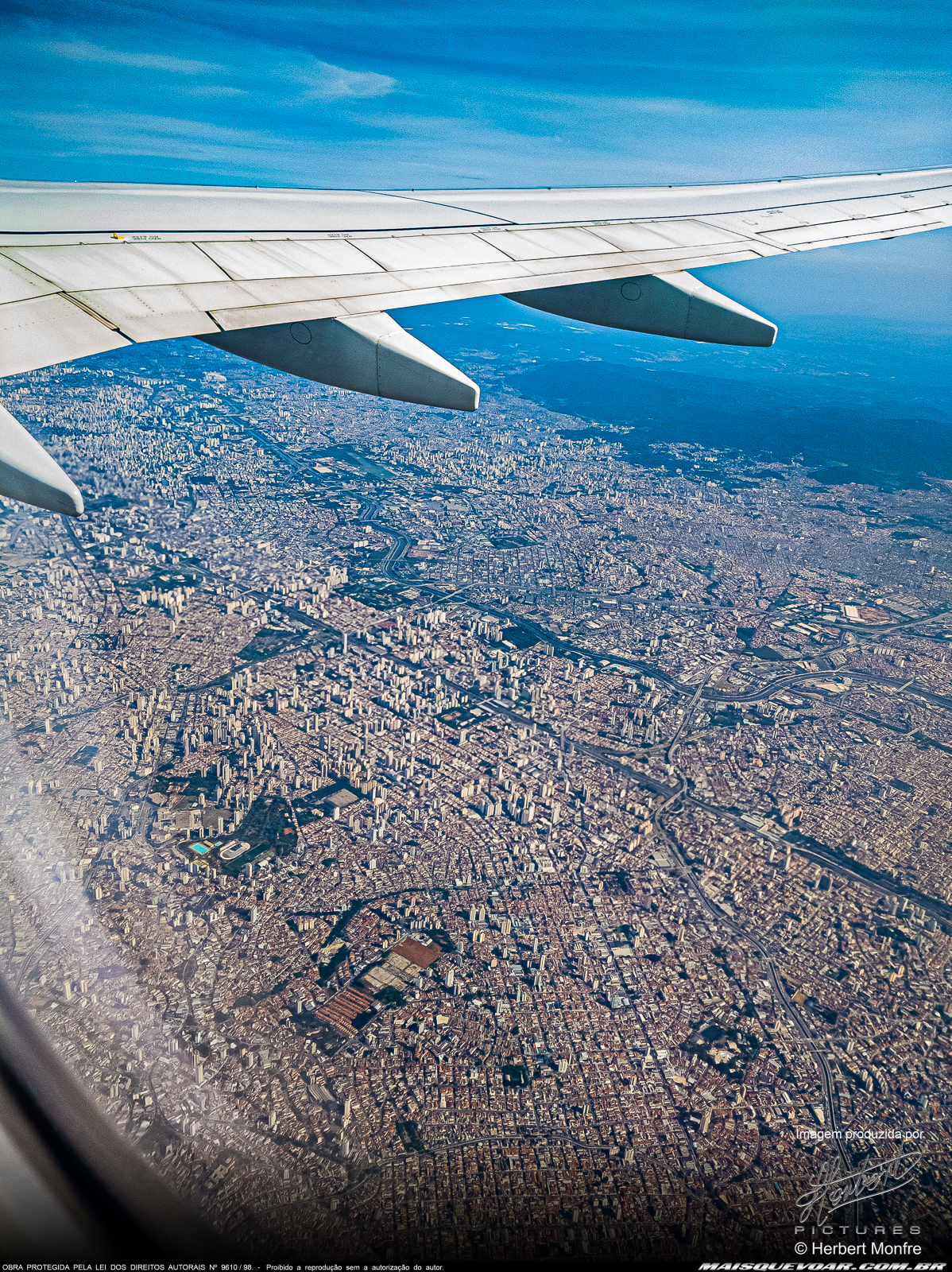






Nenhum comentário:
Postar um comentário